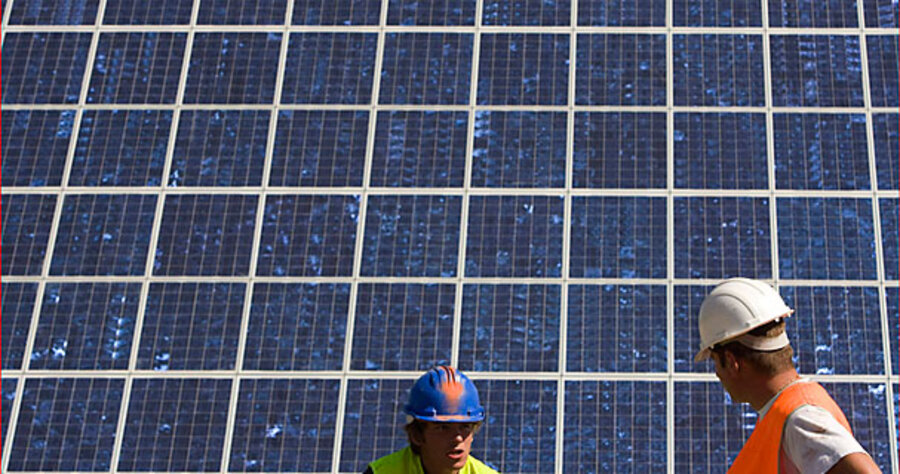Nanowires could boost solar cell efficiency
Loading...
Solar panels have great potential to harness a powerful, renewable form of energy. But there's one problem: They just aren't hairy enough.
That could soon change. Two teams of researchers have independently come up with a way of using nanowires – which, as the name suggests, are microscopically small wires – to more effectively conduct the electrons that are knocked loose from materials on the surface of the silicon solar cell as sunlight strikes it. Current thin-film photovoltaic cells are basically just a flat surface that provide no direct conduit for the electrons to get to the electrode. But by making the surfaces hairy – that is, by adding nanowires to the surface of the cell – you can provide millions of defined pathways for the electrons, making the panel more efficient.
One technique, developed by researchers at UC San Diego, "grows" the nanowires directly onto a cheap conductive surface made of indium tin oxide. The nanowires are then coated with an organic polymer. The scientists hope that this method will allow the solar nanowires to grow on curved surfaces, such as rooftops or cars. Newswise reports that this method could deliver six to seven times a much energy as conventional panels. “By growing nanowires directly on an untreated electrode surface, you can start thinking about incorporating millions or billions of nanowires in a single device. I think this is where the field is eventually going to end up,” says lead engineer Clint Novotny. “But I think we are at least a decade away from this becoming a mainstream technology.”
In the second version, scientists at Harvard University, working with with researchers from the German universities of Jena, Gottingen, and Bremen, found a cheap way to integrate nanowires directly onto silicon by bonding nanowires with fiberglass. ScienceDaily describes how it works:
While semiconductor nanowires – rods with an approximate diameter of one-thousandth the width of a human hair – can be easily synthesized in large quantities using inexpensive chemical methods, reliable and controlled strategies for assembling them into functional circuits have posed a major challenge. By incorporating spin-on glass technology, used in silicon integrated circuits manufacturing, and photolithography, transferring a circuit pattern onto a substrate with light, the team demonstrated a reproducible, high-volume, and low-cost fabrication method for integrating nanowire devices directly onto silicon.
This method involves sandwiching the nanowires between a highly conductive bottom layer and a metallic top layer, using spun-on glass as a spacer to keep the thing from shorting out.
Both techniques could dramatically boost the efficiency of solar panels, meaning that you would need less square footage of panels to deliver the same amount of energy. The price of solar-grade silicon has spiked in recent years, so if either of these methods can be implemented cheaply, they could make solar energy more widely available.
[via EcotechDaily via EcoGeek]





